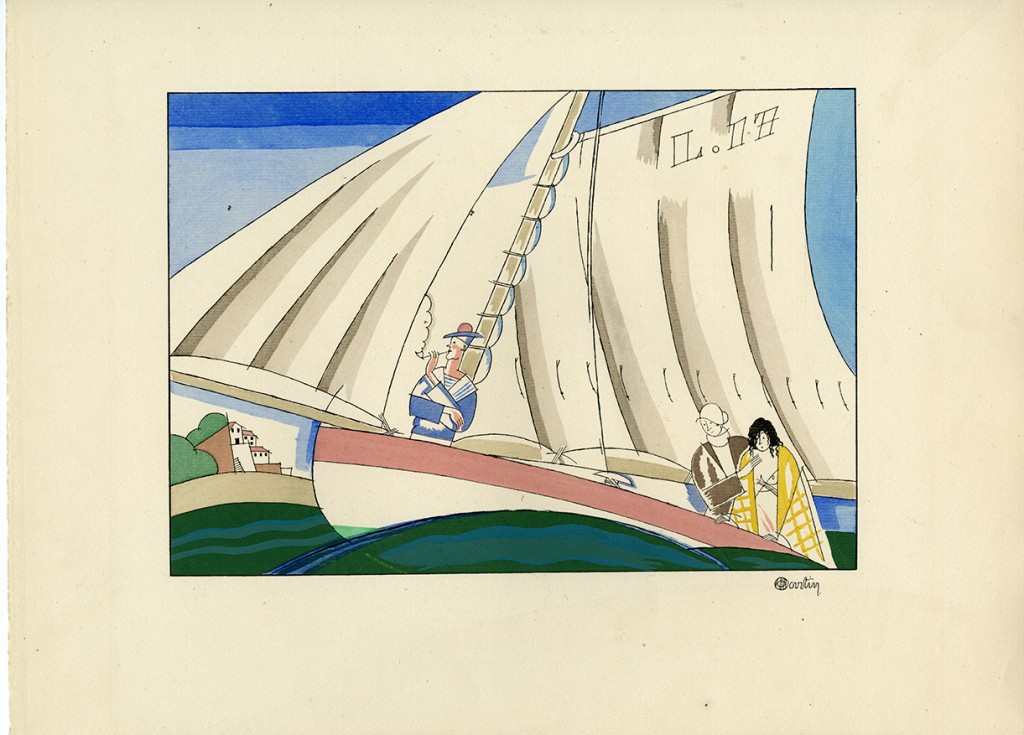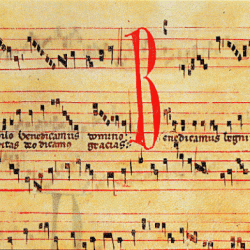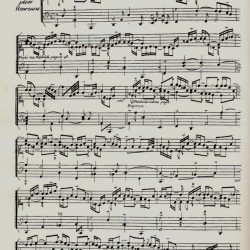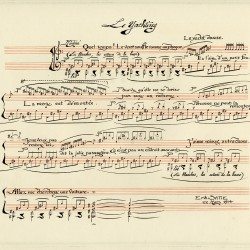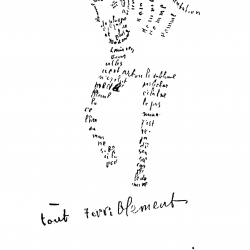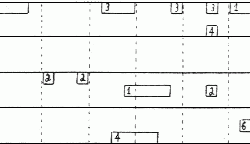Notes and signs
06.17.2016Musical notes and calligram, by Karine Le Bail
“A composer is primarily a calligrapher” (Igor Stravinsky)
From the neumes used in musical notation during the Middle Ages to Erik Satie’s score with images for his work Sports et divertissements, the composer’s calligraphic input embodies a twin system of signs. It is of course a common code of interpretation just like writing. But it only takes an admiring appraisal of the intense expressiveness of the score for Pièces pour clavecin by François Couperin, with its long, jerky or deliciously curved quavers to see « musical graphics » in action, or what poet Guillaume Apollinaire, wanting to describe visual poetry had initially dubbed lyrical ideograms prior to inventing the word calligram for these forms. With its etymology dating back to the Greek kalos (beauty) and gramma (letter), the calligram in fact « makes the text say what the drawing represents » (Michel Foucault), in the same way that that all the marks made by the composer reveal a personal intention that goes beyond the formal dimension of the musical notes themselves.
So much so, that despite the stabilisation of musical notation from the XVIIth century via the establishment of a common standard, composers never stopped generating graphic flourishes and signs; musical calligrams testifying to the irreducible freedom of their creators.
In the XXth century, composers unshackled themselves even further from classical notation. Think back to Brian Ferneyhough’s abstract score for Unity Capsule, a solo flute piece and Luigi Dallapicolla’s tree branches for Concerto fatto per la notte di Natale dell’anno and the rectangles in Morton Feldman’s score for Projection 3, (performed using two pianos).
These days, electronic music, live coding and soundpainting invite new forms of writing, making Stravinsky’s description of composer-calligrapher even more current.
Karine Le Bail is an historian (CNRS / EHESS) and the producer of the A pleine voix radio programme (France Musique).
- Neumes (Codex de Las Huelgas)
- Les idées heureuses, partition de François Couperin (1668-1733)
- Sports et divertissements, partition imagée d’Erik Satie (1886-1925)
- Tout terriblement de Guillaume Apollinaire (1880-1918), calligramme paru dans le catalogue d’une exposition consacrée à Léopold Survage et Irène Lagut, en 1917.
- Projection 3, partition de Morton Feldman (1926-1987) (Edition Peters No.6961© 1964 by C.F. Peters Corporation)


